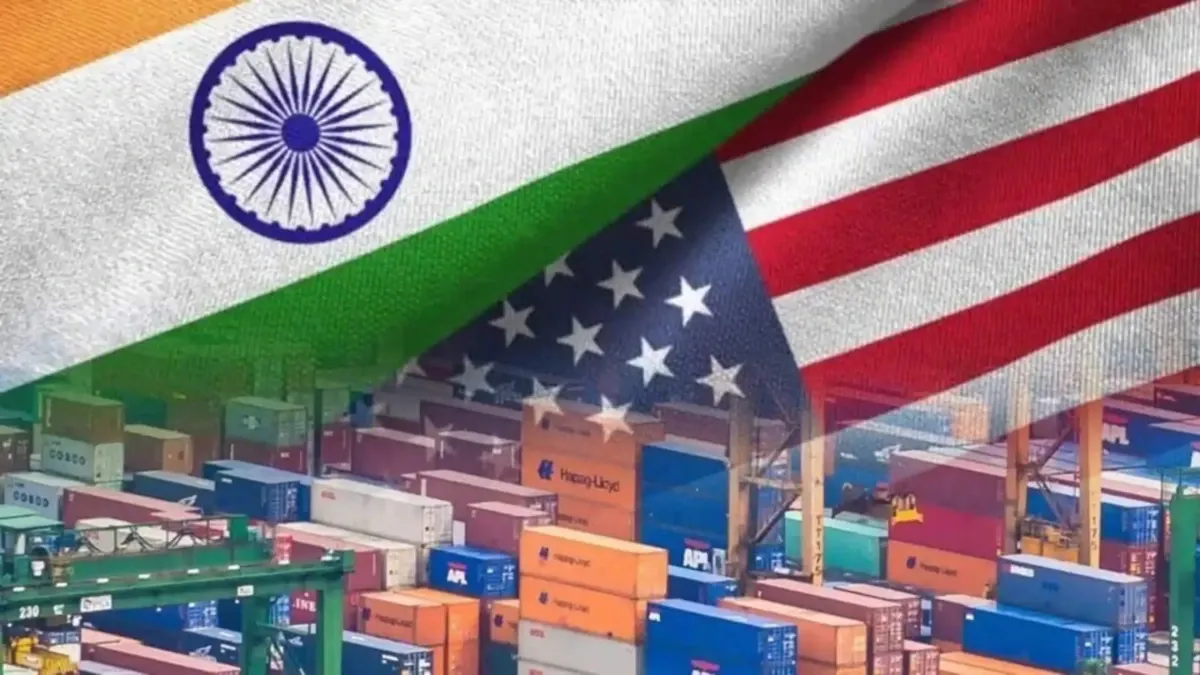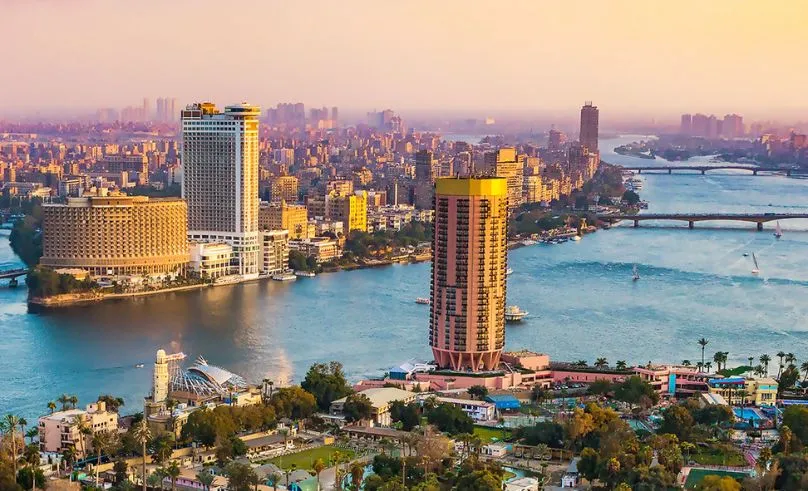In a bold move to further position itself as a leading tourism destination in East Africa, Kenya is set to revamp its visa policies and enhance port infrastructure to boost its burgeoning cruise tourism sector. This strategic initiative is part of a broader governmental effort to streamline entry procedures and stimulate economic growth by attracting more cruise ships to the Port of Mombasa and beyond.
Revamping Visa Policies: Multiple-Entry eTA and Streamlined Procedures
Kenyan President William Ruto recently announced that the government would revise its visa and Electronic Travel Authorization (eTA) requirements. This significant policy change is aimed at making the entry process more efficient and user-friendly, particularly for cruise tourists arriving at the Port of Mombasa.
The new multiple-entry eTA system will allow cruise tourists to disembark, explore Mombasa and other parts of the country, and re-board their vessels without the need for repetitive paperwork or authorization procedures. “We will be changing our visa and eTA to make entry into the country easier and seamless so that there is no paperwork or unnecessary delays for visitors,” President Ruto stated during his address in Mombasa. This modernization of the visa process aligns with recent adjustments made for international arrivals at Kenya’s major airports, ensuring that travelers benefit from a uniform and efficient entry process regardless of their mode of arrival.
The introduction of the multiple-entry eTA is expected to not only simplify the travel experience but also to significantly reduce waiting times at immigration checkpoints. By cutting down bureaucratic red tape, Kenya is poised to enhance its appeal as a convenient and tourist-friendly destination for international visitors. Such measures are particularly crucial in the post-pandemic era, where streamlined travel protocols have become a top priority for travelers worldwide.
The Rise of Cruise Tourism in Kenya
Over the past few years, Kenya’s cruise tourism sector has witnessed remarkable growth. According to statistics from the Ministry of Tourism and Wildlife, the country received 6,561 cruise tourists last year—a growth of over 163.5% compared to previous periods. This rapid expansion is a testament to the successful efforts of both the government and the private sector in promoting Kenya as a dynamic cruise destination.
The Port of Mombasa, with its strategic location along the Indian Ocean, has emerged as a pivotal gateway for cruise tourism in East Africa. The port has recently set a new benchmark by welcoming the MS Norwegian Dawn—the largest cruise liner ever to dock at Mombasa—with more than 3,100 passengers on board. This record-setting event highlights the potential of the port to accommodate large vessels and underscores Kenya’s readiness to handle increased cruise traffic.
Furthermore, projections for the current cruise season are promising. Cabinet Secretary for Tourism and Wildlife, Rebecca Miano, confirmed that Kenya is expected to welcome eight cruise ships during this season alone. This anticipated increase in cruise ship arrivals is likely to contribute significantly to the country’s overall tourism revenue, while also bolstering the local hospitality and services sectors.
Strategic Investments in Port Infrastructure
Complementing the revised visa policies, Kenya is also ramping up its investments in port infrastructure to support the anticipated surge in cruise tourism. The Port of Mombasa is undergoing extensive modernization efforts aimed at improving its capacity and operational efficiency.
Key infrastructure upgrades include:
- Expansion of Berths: The port is increasing its capacity to accommodate larger cruise liners, ensuring that vessels like the MS Norwegian Dawn can dock smoothly without causing congestion.
- Advanced Cargo Handling Equipment: Investments in state-of-the-art cargo handling systems will streamline operations and reduce turnaround times for both cargo and cruise vessels.
- Enhanced Passenger Facilities: Improvements to passenger terminals, including more efficient customs and immigration processing areas, will provide a better travel experience for tourists.
- Digitalization Initiatives: The integration of digital technologies into port operations will facilitate real-time tracking of vessel movements and improve overall operational transparency.
These infrastructure enhancements are expected to position the Port of Mombasa as one of the premier cruise hubs in the region. By creating a more robust and efficient port environment, Kenya is not only catering to the needs of cruise tourists but also stimulating local economic activities that rely on maritime trade.
Nationwide Classification Exercise for Tourism Facilities
In a parallel move to boost the tourism sector, Kenya’s Tourism Regulatory Authority (TRA) has announced a nationwide classification exercise for all tourism facilities and establishments. Set to commence in February 2025, this exercise aims to standardize the quality of tourism services across the country.
The classification exercise will involve:
- Assessment of Infrastructure: Evaluating the physical infrastructure of hotels, resorts, and tourist attractions to ensure they meet international standards.
- Service Quality Metrics: Reviewing service delivery protocols to guarantee that tourists receive world-class hospitality and customer service.
- Safety and Security Standards: Ensuring that all establishments adhere to stringent safety regulations, which is crucial for maintaining the confidence of international travelers.
- Digital Integration: Encouraging the adoption of digital tools for booking, customer feedback, and service management to create a more seamless tourism experience.
By implementing these quality measures, Kenya aims to enhance its overall tourism product. This not only benefits cruise tourists but also strengthens the country’s broader tourism appeal, attracting a diverse range of visitors from around the globe.
Economic Impact and Growth Potential
The economic implications of these strategic reforms and investments are far-reaching. Kenya’s international tourist arrivals have already shown robust growth, with a reported 15% increase—from 2.09 million in 2023 to 2.4 million in 2024. Additionally, inbound tourism earnings surged by 19.8%, reaching approximately 452.20 billion Kenyan shillings (about USD 3.49 billion) compared to $2.92 billion in 2023.
The enhanced cruise tourism sector is expected to further stimulate economic growth through:
- Job Creation: Increased tourist inflows will lead to the creation of jobs in various sectors, including hospitality, transportation, retail, and entertainment. Cruise tourism, in particular, has a multiplier effect on the local economy, as passengers spend money on shore excursions, local dining, and shopping.
- Foreign Exchange Earnings: With more international visitors spending money within the country, Kenya is poised to boost its foreign exchange earnings. This is vital for balancing the trade deficit and strengthening the national economy.
- Infrastructure Development: The continued investments in port and tourism infrastructure will generate long-term economic benefits. Improved facilities not only cater to the immediate needs of tourists but also lay the groundwork for sustainable development in the future.
- Small and Medium Enterprises (SMEs): Local businesses stand to benefit significantly from the tourism boom. As more cruise ships dock and more tourists visit, SMEs in sectors such as transportation, handicrafts, local tour operations, and food services are expected to experience increased demand.
The Global Context: Cruise Tourism in a Post-Pandemic World
The global cruise industry has been on a path to recovery following the disruptions caused by the COVID-19 pandemic. International cruise tourism, which had been severely affected by travel restrictions and health concerns, is now witnessing a robust rebound. Many countries are revising their entry policies and upgrading their infrastructure to capitalize on this recovery.
Kenya’s decision to revise visa requirements and invest in port infrastructure is timely and strategic in this global context. By adopting measures similar to other leading cruise destinations, Kenya is positioning itself to capture a larger share of the recovering cruise tourism market. The country’s unique blend of wildlife, culture, and scenic coastlines offers a distinctive appeal that sets it apart from traditional cruise destinations.
Furthermore, the multiple-entry eTA system is part of a broader global trend towards digitization and streamlined travel. Many countries are now leveraging technology to enhance border control processes and improve the overall travel experience. Kenya’s move in this direction not only reflects a commitment to modernization but also underscores its determination to remain competitive in the rapidly evolving global tourism landscape.
Enhancing the Local Tourism Ecosystem
In addition to attracting more cruise tourists, Kenya’s revised visa policies and infrastructure investments are expected to have a profound impact on the local tourism ecosystem. The ripple effects of these changes will be felt across various segments of the economy:
Boost to Local Businesses
Local entrepreneurs and small businesses are poised to benefit from the expected surge in cruise tourism. With more cruise ships scheduled to dock at the Port of Mombasa, local vendors, restaurants, and tour operators can expect a significant uptick in demand. This, in turn, will drive innovation and competition in the local hospitality industry, leading to improved services and diversified offerings for tourists.
Cultural and Heritage Tourism
Kenya is renowned for its rich cultural heritage and vibrant traditions. As cruise tourists disembark to explore local attractions, there will be increased opportunities for cultural exchange. Tourist visits to historic sites, traditional villages, and local markets will not only enhance visitors’ experiences but also contribute to the preservation and promotion of Kenya’s cultural legacy.
Sustainable Tourism Practices
The government’s initiatives also emphasize sustainable tourism practices. With the tourism regulatory authority’s upcoming classification exercise, there will be a greater focus on eco-friendly and responsible tourism. This includes initiatives to reduce the environmental footprint of tourism activities and ensure that the benefits of tourism are distributed equitably among local communities. Sustainable tourism is a key priority for Kenya, as it seeks to balance economic growth with environmental conservation.
Regional Competition and Strategic Positioning
Kenya’s efforts to enhance its cruise tourism offerings come at a time when regional competition is intensifying. Neighboring countries such as Tanzania, with its famous Zanzibar archipelago, are also vying to attract a larger share of the global cruise market. However, Kenya’s strategic reforms and investments offer several competitive advantages:
- Strategic Location: The Port of Mombasa is a crucial maritime hub that connects East Africa to major global shipping routes. Its geographic location makes it an ideal gateway for cruise tourism.
- Diverse Tourist Attractions: Beyond its pristine beaches, Kenya offers a wealth of attractions, including national parks, wildlife reserves, and cultural landmarks. This diversity ensures that cruise tourists have a range of experiences to choose from.
- Government Support: The strong backing from the Kenyan government, as evidenced by President Ruto’s proactive announcements and policy reforms, provides a stable and predictable investment climate for both local and international investors.
- Modernization Initiatives: With ongoing upgrades to port infrastructure and the introduction of digital travel systems like the multiple-entry eTA, Kenya is positioning itself as a modern and technologically advanced destination in the cruise tourism space.
Expert Opinions and Industry Insights
Tourism experts have lauded Kenya’s proactive approach to reforming its visa policies and investing in port infrastructure. Analysts believe that these measures are likely to have a transformative impact on the country’s tourism sector.
“Streamlining visa processes is critical for enhancing the travel experience,” noted a tourism industry analyst. “The multiple-entry eTA is a game-changer, as it reduces administrative hurdles and makes it easier for tourists to explore the country at their own pace.”
Another industry expert emphasized the potential economic benefits of the reforms. “Cruise tourism has a high multiplier effect. Every dollar spent by cruise tourists circulates through the local economy—supporting small businesses, creating jobs, and boosting regional development. Kenya’s initiative is a win-win for both tourists and local communities.”
The enthusiasm is not limited to industry analysts alone. Key stakeholders, including representatives from major cruise lines and port authorities, have expressed optimism about the revised policies. With eight cruise ships already expected to visit during the upcoming season, there is a palpable sense of excitement about the future prospects of cruise tourism in Kenya.
The Role of Technology in Transforming Tourism
One of the most compelling aspects of Kenya’s new initiative is its emphasis on technology-driven solutions. The implementation of a multiple-entry eTA system is emblematic of a broader digital transformation within the tourism sector. This digital overhaul is expected to yield several benefits:
- Real-Time Processing: Digital travel authorizations allow for real-time processing of visa applications, reducing wait times and improving efficiency at border checkpoints.
- Enhanced Security: Advanced data analytics and biometric verification can be integrated into the eTA system, ensuring robust security while maintaining a seamless travel experience.
- Data-Driven Insights: The digitization of travel authorizations will provide authorities with valuable data on tourist demographics and travel patterns. This information can be leveraged to tailor marketing strategies and improve service delivery.
- Improved Customer Experience: With streamlined entry procedures and reduced paperwork, tourists can enjoy a smoother and more pleasant arrival experience. This positive first impression is critical in fostering repeat visits and word-of-mouth recommendations.
As global tourism continues to evolve, the integration of technology into traditional systems is no longer optional but essential. Kenya’s adoption of digital solutions reflects its commitment to staying ahead of global trends and ensuring that its tourism sector remains competitive in a rapidly changing world.
Future Outlook: Challenges and Opportunities
While the revised visa policies and infrastructural investments paint an optimistic picture, the journey ahead is not without challenges. To fully capitalize on these opportunities, Kenya must address several key areas:
Addressing Bureaucratic Hurdles
Despite the introduction of the multiple-entry eTA system, there remains a need to ensure that all government agencies involved in the travel authorization process work in seamless coordination. Bureaucratic delays and inefficiencies can undermine the benefits of digital transformation. Continuous training and capacity-building initiatives for immigration officials will be essential to maintain a high standard of service.
Balancing Growth with Sustainability
The rapid expansion of cruise tourism, while beneficial for economic growth, must be balanced with environmental and cultural preservation. Increased tourist traffic can strain local ecosystems and disrupt traditional ways of life if not managed properly. The government’s emphasis on sustainable tourism practices will be critical in mitigating these risks. Initiatives to reduce carbon emissions, manage waste, and protect natural resources should be integrated into all development plans.
Enhancing Local Community Involvement
For tourism growth to be truly sustainable, local communities must benefit from the influx of visitors. Efforts to involve local entrepreneurs, artisans, and small businesses in the tourism value chain will be vital. This includes capacity-building programs, access to financing, and initiatives to promote local crafts and traditions. By ensuring that the benefits of tourism are widely shared, Kenya can foster long-term social and economic stability.
Navigating Regional Competition
Kenya’s neighbors are also ramping up their tourism offerings. To maintain its competitive edge, Kenya will need to continuously innovate and invest in both hard and soft infrastructure. Regular upgrades to port facilities, ongoing digital transformation, and the promotion of Kenya’s unique cultural and natural assets will be essential to distinguish it from other regional players.
Monitoring and Evaluation
Finally, establishing robust mechanisms for monitoring and evaluating the impact of these reforms will be crucial. By tracking key performance indicators—such as tourist satisfaction, economic impact, and environmental sustainability—policymakers can make informed adjustments to ensure that the benefits of increased cruise tourism are maximized while any negative externalities are minimized.
Conclusion: A New Chapter for Kenya’s Tourism Sector
Kenya’s decision to revise its visa requirements and invest in port infrastructure marks a significant milestone in its journey toward becoming a global cruise tourism hub. The introduction of a multiple-entry eTA system promises to simplify travel, reduce bureaucratic delays, and enhance the overall tourist experience. Coupled with strategic investments in the Port of Mombasa and a comprehensive nationwide classification of tourism facilities, these initiatives are poised to deliver substantial economic benefits.
With international arrivals on the rise and inbound tourism earnings reaching new heights, Kenya is well-positioned to harness the full potential of its tourism sector. The country’s unique blend of natural beauty, rich cultural heritage, and modern infrastructure offers a compelling proposition to global travelers. As more cruise ships set sail for the Port of Mombasa, the ripple effects will extend far beyond the tourism sector—stimulating job creation, supporting local businesses, and fostering sustainable development.
Moreover, Kenya’s proactive embrace of technology and digital transformation ensures that it remains competitive in a post-pandemic world where efficiency and convenience are paramount. By aligning its policies with global best practices and addressing the challenges that come with rapid growth, Kenya is not only attracting more cruise tourists but also setting the stage for long-term economic resilience and prosperity.
In a region where competition for tourist dollars is intensifying, Kenya’s forward-thinking policies serve as a blueprint for how countries can leverage policy reforms, infrastructure investments, and technological innovation to create a vibrant, sustainable, and inclusive tourism ecosystem. As the country welcomes eight cruise ships this season and anticipates even greater numbers in the coming years, the world will be watching as Kenya writes a new chapter in its storied tourism legacy—one where ease of travel, economic opportunity, and cultural exchange converge to create lasting value for all.
Ultimately, Kenya’s revamped visa policies and strategic investments underscore a clear message: the country is ready to embrace the future of tourism, ensuring that its shores remain a beacon of opportunity and discovery for travelers from every corner of the globe.
With continued collaboration between government bodies, private sector stakeholders, and local communities, Kenya’s tourism sector is set to flourish. As the world gradually reopens and travel resumes its momentum, Kenya’s initiatives provide a timely and promising glimpse into a future where tourism serves as a powerful engine for national growth and regional integration.
The journey ahead may be complex, but the potential rewards are immense—a more connected, vibrant, and prosperous Kenya awaits on the horizon, welcoming visitors with open arms and a promise of unforgettable experiences.]
Ready to take your career to the next level? Join our dynamic courses: ACCA, HESI A2, ATI TEAS 7 , HESI EXIT , NCLEX – RN and NCLEX – PN, Financial Literacy!🌟 Dive into a world of opportunities and empower yourself for success. Explore more at Serrari Ed and start your exciting journey today! ✨
photo source: Google
By: Montel Kamau
Serrari Financial Analyst
24th February, 2025
Article, Financial and News Disclaimer
The Value of a Financial Advisor
While this article offers valuable insights, it is essential to recognize that personal finance can be highly complex and unique to each individual. A financial advisor provides professional expertise and personalized guidance to help you make well-informed decisions tailored to your specific circumstances and goals.
Beyond offering knowledge, a financial advisor serves as a trusted partner to help you stay disciplined, avoid common pitfalls, and remain focused on your long-term objectives. Their perspective and experience can complement your own efforts, enhancing your financial well-being and ensuring a more confident approach to managing your finances.
Disclaimer: This article is for informational purposes only and does not constitute financial advice. Readers are encouraged to consult a licensed financial advisor to obtain guidance specific to their financial situation.
Article and News Disclaimer
The information provided on www.serrarigroup.com is for general informational purposes only. While we strive to keep the information up to date and accurate, we make no representations or warranties of any kind, express or implied, about the completeness, accuracy, reliability, suitability, or availability with respect to the website or the information, products, services, or related graphics contained on the website for any purpose. Any reliance you place on such information is therefore strictly at your own risk.
www.serrarigroup.com is not responsible for any errors or omissions, or for the results obtained from the use of this information. All information on the website is provided on an as-is basis, with no guarantee of completeness, accuracy, timeliness, or of the results obtained from the use of this information, and without warranty of any kind, express or implied, including but not limited to warranties of performance, merchantability, and fitness for a particular purpose.
In no event will www.serrarigroup.com be liable to you or anyone else for any decision made or action taken in reliance on the information provided on the website or for any consequential, special, or similar damages, even if advised of the possibility of such damages.
The articles, news, and information presented on www.serrarigroup.com reflect the opinions of the respective authors and contributors and do not necessarily represent the views of the website or its management. Any views or opinions expressed are solely those of the individual authors and do not represent the website's views or opinions as a whole.
The content on www.serrarigroup.com may include links to external websites, which are provided for convenience and informational purposes only. We have no control over the nature, content, and availability of those sites. The inclusion of any links does not necessarily imply a recommendation or endorsement of the views expressed within them.
Every effort is made to keep the website up and running smoothly. However, www.serrarigroup.com takes no responsibility for, and will not be liable for, the website being temporarily unavailable due to technical issues beyond our control.
Please note that laws, regulations, and information can change rapidly, and we advise you to conduct further research and seek professional advice when necessary.
By using www.serrarigroup.com, you agree to this disclaimer and its terms. If you do not agree with this disclaimer, please do not use the website.
www.serrarigroup.com, reserves the right to update, modify, or remove any part of this disclaimer without prior notice. It is your responsibility to review this disclaimer periodically for changes.
Serrari Group 2025





